 Facebook
Facebook
 X
X
 Instagram
Instagram
 TikTok
TikTok
 Youtube
Youtube
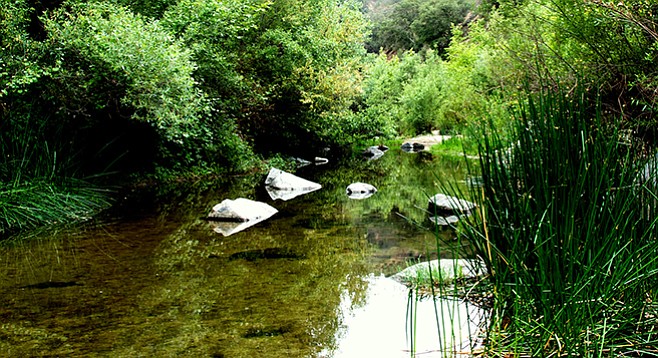
The Santa Margarita River Trails are managed by the newly merged Live Oak Coalition and the Fallbrook Trails Council. Through an agreement with the Fallbrook Public Utility District, which owns the property, the nonprofit group maintains and repairs the trails and keeps them open for hikers, mountain bikers, and equestrians. The Santa Margarita River is one of the last free-flowing rivers in San Diego County, running through three managing agencies.
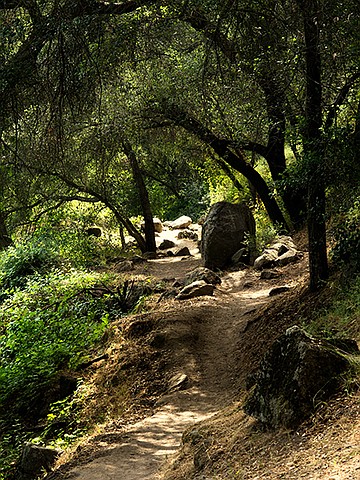
The 1400-acre river-trail property straddles the Santa Margarita River between San Diego County’s Santa Margarita Preserve, north of Fallbrook, and San Diego State University’s Santa Margarita Ecological Reserve at the Riverside County line. Both the preserve and Santa Margarita River Trails are open to the public while the university’s field station is closed to the public. There are 14 miles of trails that loop and cross the river within the property. Wildlife, including deer and other large mammals, depend on this river corridor. The area is also noted for raptors that may be seen overhead or perched in trees. The Gavilan Fire of 2002 burned part of the area. The FTC worked to restore public access to the area after the fire and continues to make improvements on the property for trail users.
Come here to experience a free-flowing river with abundant water. The river peacefully flows under a canopy of tall trees, between banks lined with dense riparian growth. It is a cool, refreshing place for a summer hike, but delightful at any time of the year.
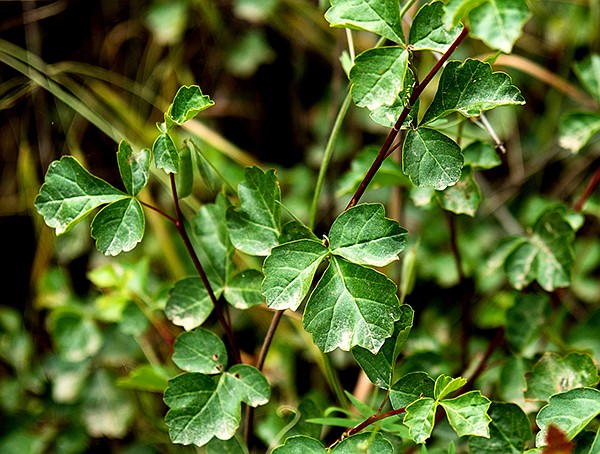
Begin hiking east from the parking area. The trail surface initially is soft sand, making the going easy for hikers but difficult for mountain bikers. Make way for any horses on the trail. The trail heads toward and under an array of tall trees, including coast live oaks, black willows, California sycamores, white alders, cottonwoods, and even a few dogwoods. The understory includes wild rose, basket bush, arroyo willow, wild grape, elderberry, blackberry, and poison oak.
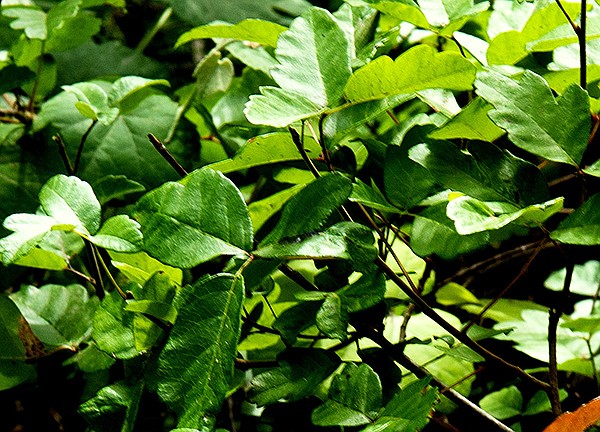
Poison oak is abundant and highly variable. In some cases it is vine-like, climbing up the oaks and other trees. In other cases it is bush-like. Basket bush is also found here and is similar in appearance to poison oak with “leaves in three.” The difference is that poison oak’s middle leaf is “free,” with a stem extending out. Make sure that poison oak can be identified. Steer your leashed dog away from poison oak. If they get its contact dermatitis–causing chemical on their fur, petting your pet will be the same as touching poison oak.
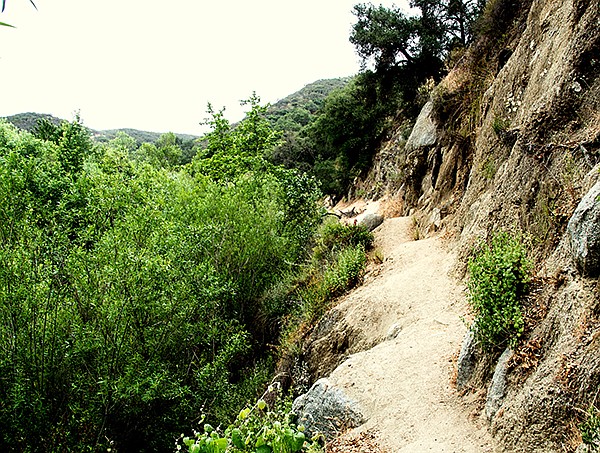
At about 0.25 mile, the trail crosses a steep hillside that is about 20 feet above the river. For the next 100 yards, it is necessary to climb over or around large rocks, the only somewhat difficult part of the trail. After getting beyond this section, the trail is an easy stroll through the forest, though it remains about 20 feet above the river to avoid the dense growth of willows, sedges, and cattails lining the riverbank.
A number of short use trails go down to sandy river beaches and pools of clear water. Some other trails join the main trail from roads that end at homes or ranches on the hills above. Stay on the main trail, which has frequent numbered signs giving the location to assist emergency crews.
At about 1.6 miles, there will be a signed fork in the road directing hikers to go right, up the hill, and equestrians to continue to a river crossing via the trail on the left. This is a good place for hikers to turn around and go back the way they came, completing a 3.2-mile out-and-back hike. If you cross the river with the horses, be prepared to get wet, possibly up to your waist.
The trail to the right goes uphill, out of the canyon, to what has been called the 500-foot trail, where you turn left. It is part of the Santa Margarita River Trails system, but here the hiking is through coastal sage scrub. The trail works its way back to the river in about half a mile. Continue up the river to Rainbow Creek, about 2.7 miles from the trailhead. Here there is a delightful, open oak forest, a good place to rest a while in the shade before turning around and going back to the trailhead to end a 5.4-mile out-and-back hike.
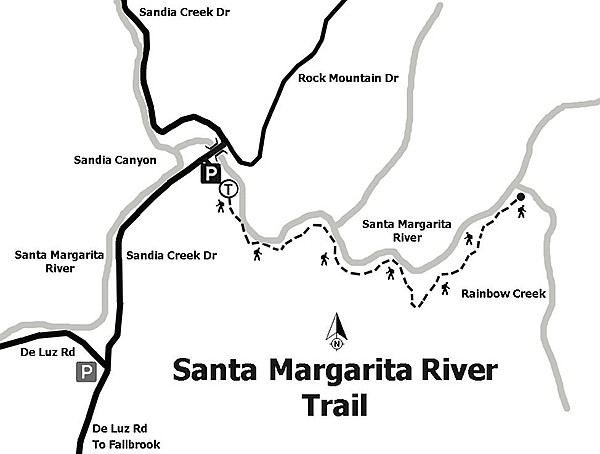
Note that the swimming hole accessed from the parking area and across Sandia Creek Drive is not open to the public. It is private property owned by the Fallbrook Public Utility District. No trespassing allowed. If there are no posted signs, it is because someone has torn them down. The only trail from the parking area that is permitted is the one closest to Sandia Creek Drive, which connects the trail system to the county preserve staging area to the south. This staging area has a larger parking area that may be used if no parking is found at the Santa Margarita River trailhead. However, starting here will add an additional 2.4 miles to the trip and will call for crossing the river four times, going to and returning from the trailhead.
Distance from downtown San Diego: About 58 miles. Allow 1.25 hours driving time (Fallbrook). Drive north on I-15, exit at Mission Rd., and follow it 4.5 miles west to Pico Rd. Go north (right) on Pico, which becomes De Luz Rd. Continue 2 miles on De Luz Rd. to its intersection with Sandia Creek Dr. Go right on Sandia Creek Dr. and find the parking area and trailhead for the Santa Margarita River Trails, 1.2 miles ahead on the right. Parking is limited and gate is locked at closing time daily.
Hiking length: 3.2 miles or 5.4 miles out-and-back options.
Difficulty: Easy to moderate on relatively flat ground over a well-maintained trail. Elevation gain/loss up to 500 feet. The trail is open to hikers, mountain bikers, and equestrians. Dogs (on leashes) allowed. Open from 8 a.m. to sunset, actual time depending on the season. No facilities or drinking water. River water must be treated before drinking. Facilities nearby at Santa Margarita Preserve. Be prepared for possible river crossings. No camping or fires allowed. Carry trash out.


The Santa Margarita River Trails are managed by the newly merged Live Oak Coalition and the Fallbrook Trails Council. Through an agreement with the Fallbrook Public Utility District, which owns the property, the nonprofit group maintains and repairs the trails and keeps them open for hikers, mountain bikers, and equestrians. The Santa Margarita River is one of the last free-flowing rivers in San Diego County, running through three managing agencies.

The 1400-acre river-trail property straddles the Santa Margarita River between San Diego County’s Santa Margarita Preserve, north of Fallbrook, and San Diego State University’s Santa Margarita Ecological Reserve at the Riverside County line. Both the preserve and Santa Margarita River Trails are open to the public while the university’s field station is closed to the public. There are 14 miles of trails that loop and cross the river within the property. Wildlife, including deer and other large mammals, depend on this river corridor. The area is also noted for raptors that may be seen overhead or perched in trees. The Gavilan Fire of 2002 burned part of the area. The FTC worked to restore public access to the area after the fire and continues to make improvements on the property for trail users.
Come here to experience a free-flowing river with abundant water. The river peacefully flows under a canopy of tall trees, between banks lined with dense riparian growth. It is a cool, refreshing place for a summer hike, but delightful at any time of the year.

Begin hiking east from the parking area. The trail surface initially is soft sand, making the going easy for hikers but difficult for mountain bikers. Make way for any horses on the trail. The trail heads toward and under an array of tall trees, including coast live oaks, black willows, California sycamores, white alders, cottonwoods, and even a few dogwoods. The understory includes wild rose, basket bush, arroyo willow, wild grape, elderberry, blackberry, and poison oak.

Poison oak is abundant and highly variable. In some cases it is vine-like, climbing up the oaks and other trees. In other cases it is bush-like. Basket bush is also found here and is similar in appearance to poison oak with “leaves in three.” The difference is that poison oak’s middle leaf is “free,” with a stem extending out. Make sure that poison oak can be identified. Steer your leashed dog away from poison oak. If they get its contact dermatitis–causing chemical on their fur, petting your pet will be the same as touching poison oak.

At about 0.25 mile, the trail crosses a steep hillside that is about 20 feet above the river. For the next 100 yards, it is necessary to climb over or around large rocks, the only somewhat difficult part of the trail. After getting beyond this section, the trail is an easy stroll through the forest, though it remains about 20 feet above the river to avoid the dense growth of willows, sedges, and cattails lining the riverbank.
A number of short use trails go down to sandy river beaches and pools of clear water. Some other trails join the main trail from roads that end at homes or ranches on the hills above. Stay on the main trail, which has frequent numbered signs giving the location to assist emergency crews.
At about 1.6 miles, there will be a signed fork in the road directing hikers to go right, up the hill, and equestrians to continue to a river crossing via the trail on the left. This is a good place for hikers to turn around and go back the way they came, completing a 3.2-mile out-and-back hike. If you cross the river with the horses, be prepared to get wet, possibly up to your waist.
The trail to the right goes uphill, out of the canyon, to what has been called the 500-foot trail, where you turn left. It is part of the Santa Margarita River Trails system, but here the hiking is through coastal sage scrub. The trail works its way back to the river in about half a mile. Continue up the river to Rainbow Creek, about 2.7 miles from the trailhead. Here there is a delightful, open oak forest, a good place to rest a while in the shade before turning around and going back to the trailhead to end a 5.4-mile out-and-back hike.

Note that the swimming hole accessed from the parking area and across Sandia Creek Drive is not open to the public. It is private property owned by the Fallbrook Public Utility District. No trespassing allowed. If there are no posted signs, it is because someone has torn them down. The only trail from the parking area that is permitted is the one closest to Sandia Creek Drive, which connects the trail system to the county preserve staging area to the south. This staging area has a larger parking area that may be used if no parking is found at the Santa Margarita River trailhead. However, starting here will add an additional 2.4 miles to the trip and will call for crossing the river four times, going to and returning from the trailhead.
Distance from downtown San Diego: About 58 miles. Allow 1.25 hours driving time (Fallbrook). Drive north on I-15, exit at Mission Rd., and follow it 4.5 miles west to Pico Rd. Go north (right) on Pico, which becomes De Luz Rd. Continue 2 miles on De Luz Rd. to its intersection with Sandia Creek Dr. Go right on Sandia Creek Dr. and find the parking area and trailhead for the Santa Margarita River Trails, 1.2 miles ahead on the right. Parking is limited and gate is locked at closing time daily.
Hiking length: 3.2 miles or 5.4 miles out-and-back options.
Difficulty: Easy to moderate on relatively flat ground over a well-maintained trail. Elevation gain/loss up to 500 feet. The trail is open to hikers, mountain bikers, and equestrians. Dogs (on leashes) allowed. Open from 8 a.m. to sunset, actual time depending on the season. No facilities or drinking water. River water must be treated before drinking. Facilities nearby at Santa Margarita Preserve. Be prepared for possible river crossings. No camping or fires allowed. Carry trash out.
Comments